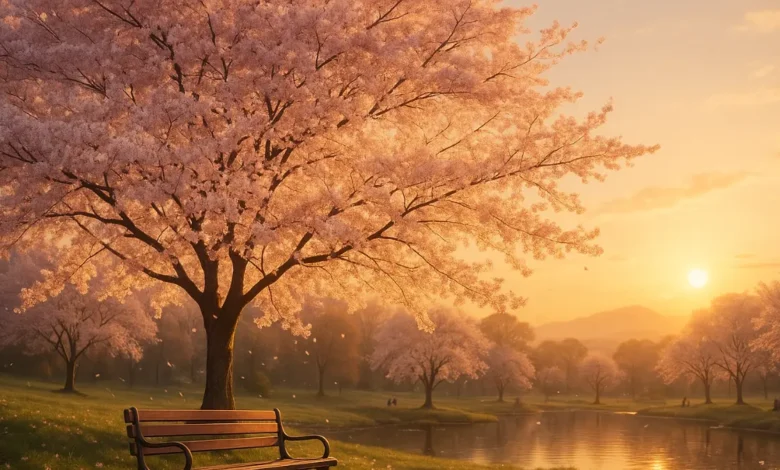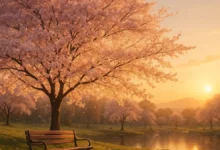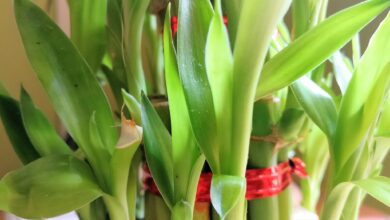The Timeless Beauty and Meaning of the Cherry Blossom Tree

Discover the timeless beauty, meaning, and symbolism of the cherry blossom tree — explore its history, species, global festivals, planting tips, and cultural significance in this expert guide.
The cherry blossom tree, often celebrated as one of nature’s most breathtaking masterpieces, is much more than a seasonal marvel. Its delicate petals and fleeting bloom have inspired poetry, art, and festivals across centuries. Known in Japan as Sakura, this tree carries deep cultural symbolism, reminding people around the world of renewal, hope, and the transient nature of life. Whether you encounter it in a Japanese garden, a city park, or your own backyard, the cherry blossom tree transforms the landscape into a dreamy spectacle of pink and white clouds each spring.
From Tokyo to Washington D.C., cherry blossoms have become global icons of peace and unity. Their beauty captures hearts and their symbolism connects cultures, making them one of the most adored flowering trees on Earth. In this article, we’ll explore the fascinating origins, species, symbolism, cultivation, and cultural legacy of the cherry blossom tree — revealing why this elegant bloom continues to enchant people everywhere.
The Origin and History of the Cherry Blossom Tree
The story of the cherry blossom tree is as old and rich as civilization itself. These trees have grown across Asia for thousands of years, but their most famous legacy lies in Japan. Historical records trace cherry blossoms back to at least the Nara Period (710–794 AD), when they were first celebrated by Japanese aristocrats for their exquisite beauty.
Over time, the cherry blossom tree became an integral part of Japanese identity. During the Heian Period (794–1185), emperors and poets began hosting hanami — flower-viewing celebrations under blooming trees. These gatherings evolved into national traditions that continue to this day, symbolizing unity, appreciation, and reflection.
Interestingly, cherry blossoms were not confined to Japan. In ancient China, they represented feminine beauty and love, while in Korea they became symbols of purity and transience. The spread of the cherry blossom tree across continents was driven by trade, cultural exchange, and admiration — and by the 20th century, cherry blossoms had taken root in the United States, Europe, and beyond.
Today, cherry blossom festivals draw millions of visitors annually, proving that the charm of these blossoms transcends boundaries. Their legacy has become not only botanical but emotional, linking the past with the present through beauty and symbolism.
Cultural Significance of Cherry Blossoms
In Japan, cherry blossoms are more than flowers — they are spiritual emblems. The fleeting bloom of the cherry blossom tree, lasting only about two weeks, represents the ephemeral nature of life. This deep philosophy, known as mono no aware, teaches appreciation for the moment and acceptance of impermanence.
During the cherry blossom season, people gather for hanami parties under the trees. These joyful celebrations include picnics, music, and laughter — but they also carry a quiet sense of reflection. As petals fall, people are reminded of the beauty and fragility of existence.
In other cultures, cherry blossoms have taken on different meanings. In China, they symbolize love, strength, and female beauty. In Korea, they reflect purity and the new beginnings of spring. In the United States, where Japan gifted cherry trees to Washington D.C. in 1912, they stand for friendship and international harmony.
Thus, the cherry blossom tree serves as a universal metaphor — for renewal, for peace, and for the delicate cycles of nature and life.
The Different Species of Cherry Blossom Trees
There are more than 200 species and hybrids of cherry blossom trees, each with its own distinct color, shape, and bloom pattern. Some are native to Asia, while others have been cultivated across Europe and America.
Yoshino Cherry (Prunus × yedoensis)
The Yoshino cherry is the most famous variety, known for its soft pink-white petals and breathtaking clusters. It is the dominant tree in Tokyo’s cherry blossom parks and the one gifted to Washington D.C. by Japan. Yoshino trees bloom simultaneously, creating the illusion of a cloud-like canopy.
Kwanzan Cherry (Prunus serrulata ‘Kwanzan’)
Kwanzan trees boast double-layered blossoms with rich pink petals. Their fuller flowers make them a favorite for decorative planting in urban parks and residential gardens. The Kwanzan cherry blooms slightly later than the Yoshino, offering a prolonged viewing season.
Weeping Cherry (Prunus subhirtella ‘Pendula’)
As the name suggests, this tree’s branches gracefully arch downward, resembling a natural fountain of blossoms. Its elegance and drooping pink blooms make it one of the most photogenic cherry blossom varieties.
Other Varieties
There are also wild cherry trees such as the Prunus jamasakura, Oshima cherry, and Sargent cherry, each native to specific Japanese regions. Hybrid cultivars have since been developed to adapt to diverse climates across North America and Europe.
| Type of Cherry Blossom Tree | Petal Color | Bloom Season | Unique Feature |
|---|---|---|---|
| Yoshino Cherry | Pale pink to white | Early spring | Most iconic, soft clusters |
| Kwanzan Cherry | Deep pink | Mid-spring | Double blossoms |
| Weeping Cherry | Light pink | Mid to late spring | Graceful drooping branches |
| Sargent Cherry | Bright pink | Early spring | Vivid color and strong branches |
| Oshima Cherry | White | Mid-spring | Fragrant petals |
How Cherry Blossoms Became a Global Phenomenon
The global spread of cherry blossom trees is a beautiful story of diplomacy, art, and admiration. The most famous international exchange occurred in 1912 when Japan gifted 3,020 cherry trees to Washington D.C. as a symbol of friendship. Those trees were planted along the Potomac River, where they continue to attract millions of visitors during the National Cherry Blossom Festival each year.
In Europe, cherry blossoms have graced parks from Paris to London, symbolizing grace and peace. In countries like Canada, Brazil, and New Zealand, cherry blossom trees have adapted remarkably to local climates, becoming ambassadors of Japanese culture.
Beyond their beauty, cherry blossoms also inspired modern fashion, photography, art installations, and even branding — appearing in cosmetics, perfumes, and digital design. Their versatility in meaning and aesthetic makes them universally appealing. Today, from Seoul’s Yeouido Park to Vancouver’s VanDusen Garden, the cherry blossom tree remains a shared language of beauty and renewal.
The Science Behind the Cherry Blossom Tree
Beneath their delicate exterior lies fascinating science. Cherry blossom trees belong to the genus Prunus, which includes cherries, plums, apricots, and almonds. They are deciduous trees that require a period of winter dormancy to trigger their spring bloom. Temperature, sunlight, and soil conditions all influence their flowering cycle.
Cherry blossoms typically bloom when temperatures rise above 60°F (15°C). However, this delicate timing can shift with changing climates. Warmer winters may cause earlier blooms, while unexpected frosts can damage buds. Scientists in Japan and the U.S. use detailed bloom predictions based on temperature data and historical patterns to forecast cherry blossom festivals each year.
The color of the petals is influenced by anthocyanins, natural pigments that range from pale pink to deep magenta depending on soil pH and light exposure. The trees’ short blooming period — often only seven to fourteen days — is due to their sensitivity to wind, rain, and temperature fluctuations.
Thus, behind every serene blossom lies a balance between nature’s precision and unpredictability — a living example of nature’s artistry.
Planting and Caring for a Cherry Blossom Tree
Growing a cherry blossom tree is a rewarding experience for gardeners. While they look delicate, these trees are surprisingly resilient when given proper care.
Choosing the Right Location
Cherry blossom trees thrive in full sunlight and well-drained soil. They need at least six hours of sunlight per day to flourish. While they prefer slightly acidic soil, they can adapt to various soil types as long as water drainage is sufficient.
Planting Process
The best time to plant a cherry blossom tree is early spring or autumn, when the ground is moist but not frozen. Dig a hole twice as wide as the root ball and slightly shallower than its depth. Gently place the tree, cover the roots with soil, and water generously.
Watering and Maintenance
Regular watering during the first few years helps establish a strong root system. Mature trees require less frequent watering except during droughts. Prune dead or weak branches after the blooming season to maintain shape and airflow.
| Care Aspect | Best Practice |
|---|---|
| Sunlight | 6+ hours daily |
| Soil | Well-drained, slightly acidic |
| Watering | Weekly during growth season |
| Pruning | After bloom season |
| Fertilizer | Balanced mix, early spring |
With consistent care, your cherry blossom tree can live for 30 to 40 years, filling every spring with soft cascades of color.
Cherry Blossoms in Art, Poetry, and Philosophy
Few natural elements have inspired artists like the cherry blossom tree. In Japanese art, it represents simplicity, beauty, and impermanence. Ancient scrolls and paintings from the Edo period often depicted cherry trees as backdrops for samurai or lovers, emphasizing life’s fleeting beauty.
Poets across generations have used cherry blossoms as metaphors for love, loss, and rebirth. The haiku poet Matsuo Bashō famously wrote of their fragile beauty, while modern poets still use the blossoms to symbolize hope in times of change.
“In the gentle breeze,
petals drift and softly fall—
time whispers goodbye.”
In contemporary art, cherry blossoms appear in photography, fashion prints, and even tattoos, often symbolizing renewal and inner peace. Their timeless appeal ensures they remain a universal symbol of grace and emotional depth.
Cherry Blossom Festivals Around the World
Every spring, cherry blossom festivals light up cities across the globe. These celebrations attract millions who gather to witness the pink spectacle and enjoy cultural performances, food, and art.
Japan – Hanami Tradition
In Japan, hanami is the ultimate spring celebration. Families and friends gather beneath blooming cherry trees for picnics, tea, and song. Major spots include Ueno Park in Tokyo, Maruyama Park in Kyoto, and Hirosaki Castle in Aomori. At night, the blossoms are illuminated in an enchanting ritual known as yozakura.
United States – Washington D.C.
The National Cherry Blossom Festival in Washington D.C. marks the friendship between Japan and the United States. From parades to cultural exhibits, this festival transforms the capital into a sea of pink.
Korea, China, and Beyond
In South Korea, Jinhae hosts one of Asia’s largest cherry blossom festivals, while in China, Wuhan University’s campus becomes a floral wonderland. Cities in Canada, Germany, and Australia also celebrate this tradition, proving that the cherry blossom tree has become a global ambassador of beauty and peace.
Environmental Benefits of Cherry Blossom Trees
Beyond their aesthetic charm, cherry blossom trees play a role in ecological balance. Their blooms attract bees, butterflies, and birds, promoting pollination and supporting biodiversity. The trees also absorb carbon dioxide, release oxygen, and contribute to cooling urban heat zones.
Urban planners often plant cherry blossom trees to soften cityscapes, reduce air pollution, and create serene green spaces. Their seasonal bloom cycle provides mental wellness benefits — studies show that exposure to blooming trees can reduce stress and increase happiness.
Thus, planting cherry blossom trees is not just a celebration of beauty but also a contribution to the planet’s well-being.
Quotes about Cherry Blossoms
“The cherry blossom tree reminds us that beauty is fleeting — but every season of life holds its own bloom.”
— Unknown
“Just like the cherry blossom, we too must let go when it is time to fall.”
— Japanese Proverb
“In the stillness beneath a cherry tree, time feels softer — almost kind.”
— Matsuo Bashō
These quotes capture the poetic soul of the cherry blossom — a reminder that nature speaks in the language of emotion.
Common Misconceptions about Cherry Blossom Trees
Many people mistake cherry blossom trees for fruit-bearing cherry trees. While they belong to the same genus, most ornamental cherry blossoms do not produce edible fruit. Their beauty lies solely in their blossoms.
Another misconception is that cherry blossoms are fragile. In truth, they can withstand moderate weather variations and adapt to a range of climates. Their short bloom time is natural, not a weakness — it’s what gives them their poignant beauty.
FAQs About Cherry Blossom Trees
Q1: How long do cherry blossom trees live?
Most cherry blossom trees live between 30 and 40 years, though some varieties like the Yoshino can live longer with proper care.
Q2: Can I grow a cherry blossom tree in my backyard?
Yes. Many cultivars, such as the Kwanzan and Weeping cherry, grow beautifully in home gardens if they receive enough sunlight and well-drained soil.
Q3: Why do cherry blossoms bloom for such a short time?
Their bloom period lasts only about two weeks because petals are delicate and easily affected by temperature, rain, and wind. This short bloom is symbolic of life’s fleeting nature.
Q4: Do cherry blossom trees produce fruit?
Most ornamental cherry blossom trees do not produce edible fruit. However, some species related to the Prunus avium family do bear small cherries, often inedible to humans but loved by birds.
Q5: What do cherry blossoms symbolize?
They symbolize renewal, hope, and the transient beauty of life — reminding us to appreciate every moment.
Conclusion: The Eternal Allure of the Cherry Blossom Tree
The cherry blossom tree is more than a plant; it’s a living poem. With every spring bloom, it paints the world in hues of renewal and grace. Its fleeting beauty teaches timeless wisdom — that every moment, no matter how brief, carries meaning. From ancient Japan to modern metropolises, the cherry blossom continues to unite hearts, cultures, and generations.


